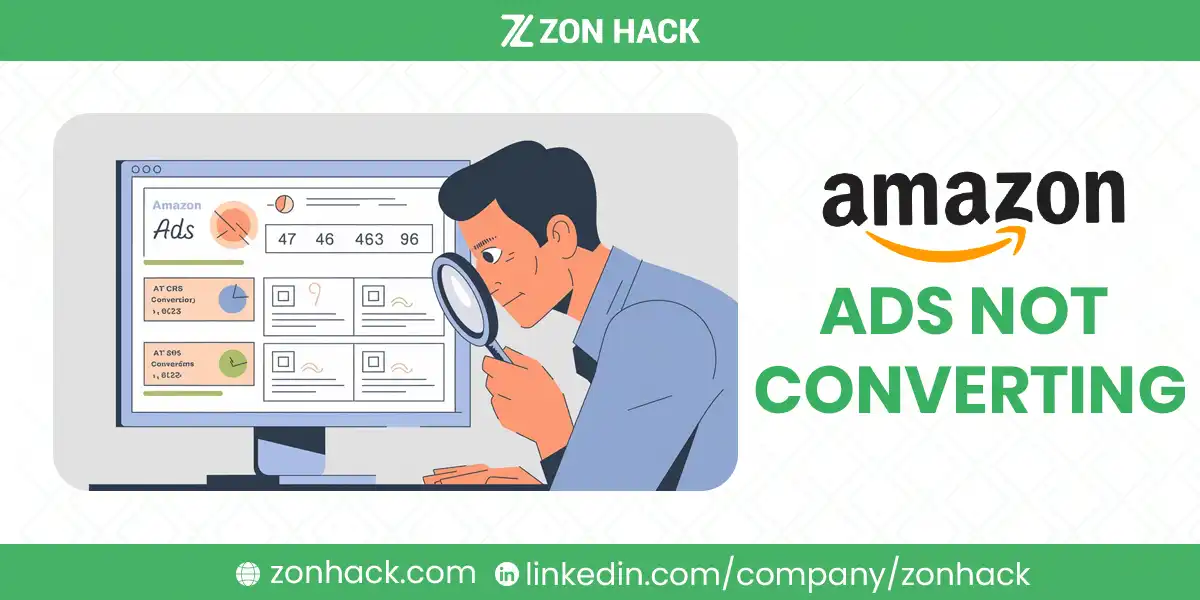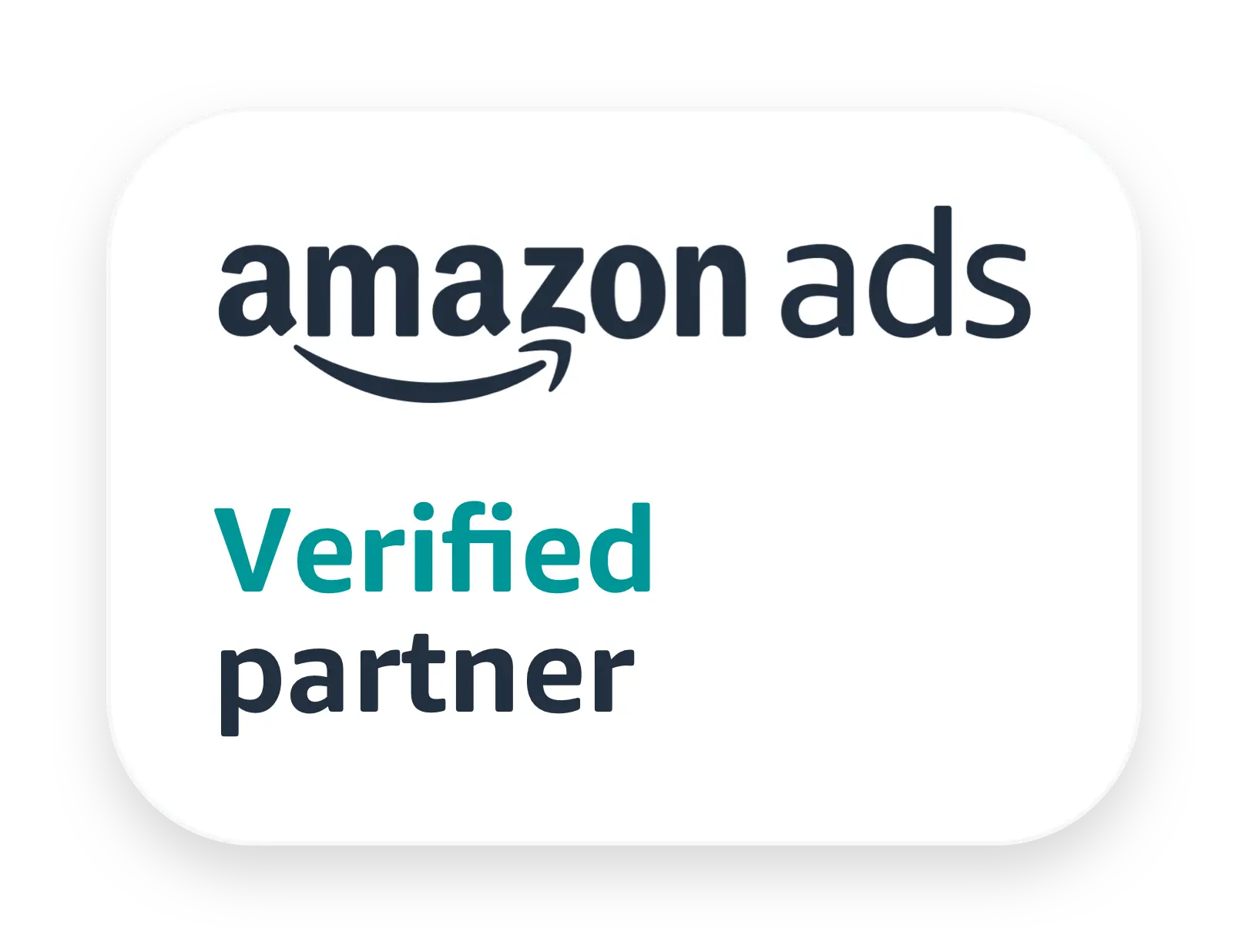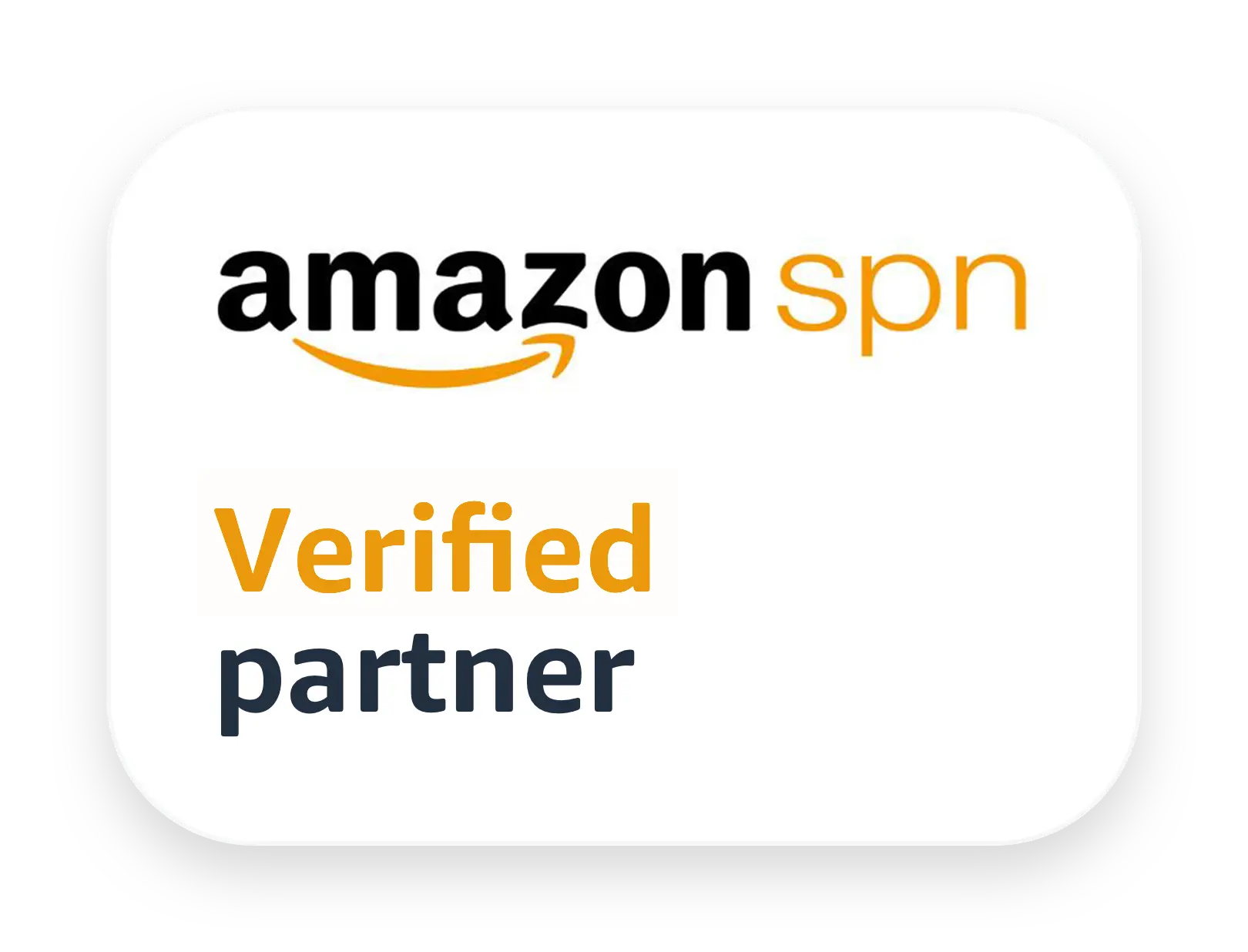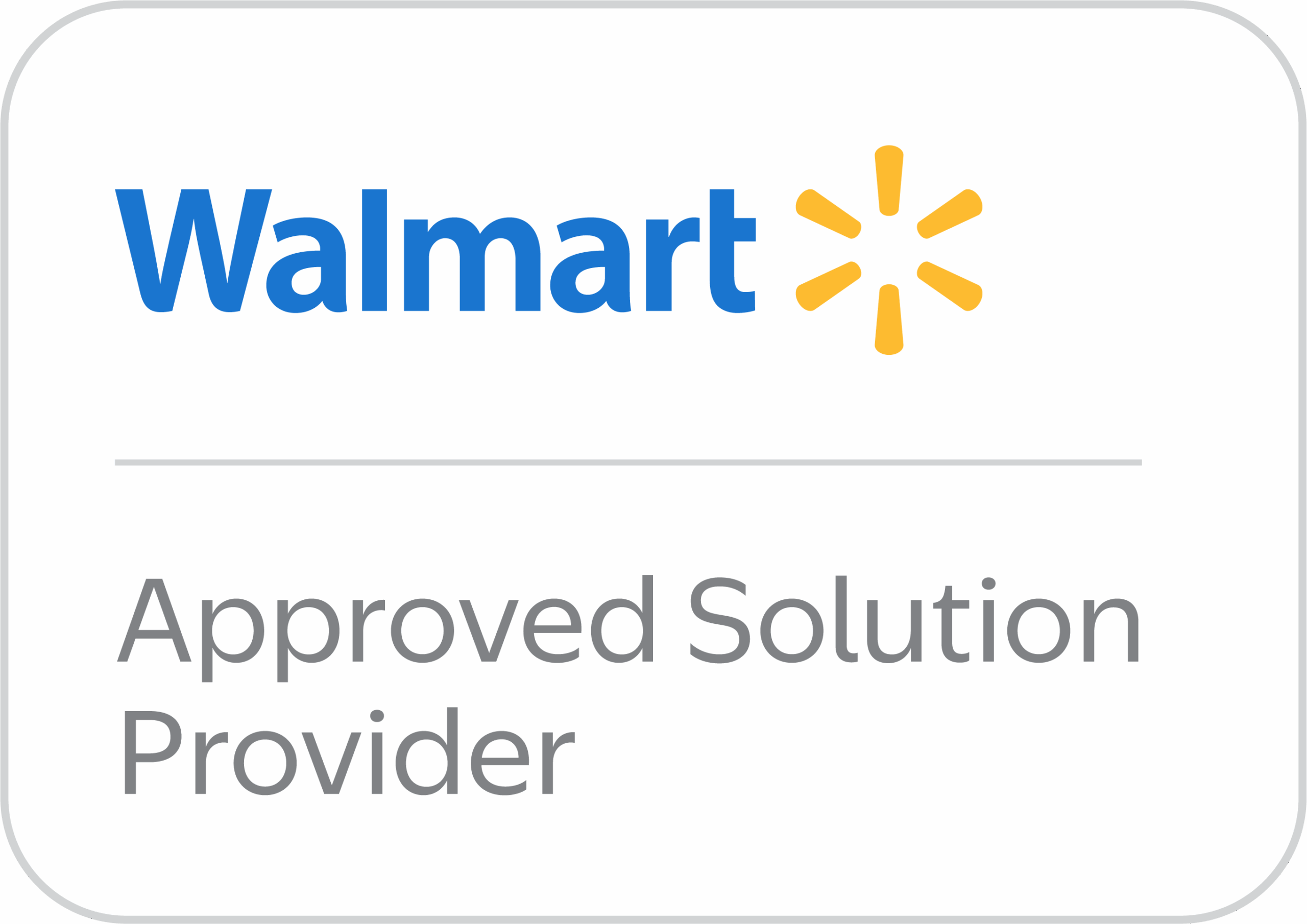Are you frustrated by Amazon ads draining your budget with little to no return? Many sellers face this challenge, and it can be a significant roadblock to success. Amazon PPC (Pay-Per-Click) advertising is a powerful tool to drive traffic, but its ultimate goal—conversion—is where many campaigns fall short. Conversion rates, the percentage of clicks that turn into sales, are the heartbeat of any advertising effort. Without a healthy conversion rate, even the most aggressive ad campaigns can fail to deliver.
This article takes a close look at why your Amazon ads might not be converting and offers actionable strategies to turn things around.
What’s Amazon PPC Conversion Rate
In the context of Amazon PPC, your conversion rate is the percentage of ad clicks that lead to a sale. For instance, if 100 people click on your ad and 10 make a purchase, your conversion rate is 10%. While there’s no universal benchmark for a “good” conversion rate on Amazon, a rate between 10% to 15% is considered strong for many categories. However, success largely depends on your niche, competition, and product pricing.
A high conversion rate means your ads are effectively targeting the right audience, optimizing your ad spend, and boosting profitability. Conversely, a low conversion rate signals inefficiencies that could be costing you both clicks and dollars.
Several factors influence conversion rates, including product quality, competition, seasonality, and consumer behavior. These variables emphasize the importance of understanding your market and continuously optimizing your campaigns.
Why Your Amazon Ads Might Not Be Converting
Targeting and Keyword Issues
One of the most common reasons for low conversions is misaligned targeting. Your ads may be attracting clicks from users who aren’t genuinely interested in your product.
Keyword selection plays a pivotal role here. Using overly broad keywords like “coffee grinder” might generate clicks, but these clicks often lack buying intent. On the other hand, long-tail keywords such as “best ceramic burr coffee grinder for espresso” target a more specific audience, leading to higher conversion rates.
Moreover, keyword cannibalization can undermine your efforts. This happens when multiple campaigns bid on the same keywords, driving up costs and splitting potential conversions. To avoid this, ensure clear distinctions between campaigns and ad groups.
Another overlooked factor is the use of negative keywords. These help exclude irrelevant search terms, preventing wasteful clicks. For example, adding “manual” as a negative keyword ensures that users searching for “manual coffee grinder” won’t see your ads if you’re selling an electric grinder.
Finally, consider your bidding strategy. Setting bids too low might result in poor ad visibility, while bidding too high can erode your profitability. Amazon offers three bidding options—dynamic down-only, dynamic up-and-down, and fixed bids. Choose the one that aligns with your campaign goals and adjust based on performance data.
Listing Quality Issues
Even the best ad campaigns can’t save a poorly optimized product listing. When shoppers click on your ad, your listing must convince them to buy. Key components of an optimized listing include:
- Product title: It should be clear, concise, and packed with relevant keywords. A title like “Electric Burr Coffee Grinder with Adjustable Settings for Espresso, French Press, and Pour Over” is both keyword-rich and informative.
- Product images: High-quality visuals are non-negotiable. Use multiple angles, lifestyle shots, and zoomable images to showcase your product effectively. Studies show that listings with at least 6 high-quality images perform better.
- Bullet points: Highlight key features and benefits in a scannable format. Focus on how your product solves a problem or adds value.
- Product description: This is your chance to tell a compelling story. Use natural language to describe your product’s unique selling points and avoid stuffing keywords unnaturally.
If eligible, A+ Content can elevate your listing further. Enhanced visuals, comparison charts, and detailed product descriptions build trust and help you stand out from competitors. Amazon reports that A+ Content can boost conversions by up to 10%.
Pricing and Offer Issues
Pricing is a major conversion driver on Amazon, where customers are accustomed to comparing options. If your product is priced significantly higher than competitors without a clear justification, potential buyers may skip your listing. Conversely, pricing too low can raise doubts about quality and erode your margins.
Offering compelling promotions, such as limited-time discounts, bundles, or free shipping, can make your product more attractive. Clearly communicating these offers in your listing and ads ensures customers perceive your product as a great value.
Reviews and Trust Signals
Shoppers rely heavily on reviews to make purchasing decisions. A product with a star rating below 4.0 or a slew of negative reviews can deter even the most interested buyer. Building a strong review profile involves delivering excellent customer service and encouraging satisfied customers to leave feedback. Addressing negative reviews professionally shows potential buyers that you value their concerns.
Other Factors
Finally, external variables like a saturated niche or poor product quality might be the root cause of low conversions. If your product doesn’t meet customer expectations or fails to stand out, no amount of ad spend can compensate for the underlying issue.
Solutions to Improve Amazon PPC Conversion Rates
Now that we’ve identified the key reasons why your Amazon ads might not be converting, let’s focus on actionable strategies to turn things around. By optimizing various elements of your campaign, listing, and overall strategy, you can significantly boost your conversion rates and achieve a stronger return on investment (ROI).
Refine Your Targeting and Keyword Strategy
To improve conversions, fine-tuning your targeting and keyword selection is crucial. Start by conducting a comprehensive audit of your campaigns using tools like Amazon Advertising Console, Helium 10, or Jungle Scout. Look for underperforming keywords, irrelevant clicks, and search terms that aren’t driving sales.
- Focus on buyer-intent keywords: Use specific, long-tail keywords that match the intent of customers ready to purchase. For instance, instead of “coffee grinder,” target keywords like “best burr coffee grinder for espresso.”
- Leverage negative keywords: Analyze your search term reports to identify irrelevant or wasteful clicks. Add these terms to your negative keyword list to prevent ads from showing for unrelated searches. This ensures your budget focuses on high-potential opportunities.
- Segment your campaigns: Break down your campaigns into distinct ad groups for branded keywords, generic keywords, and competitor keywords. This structure allows for better bid control and performance analysis.
- Test automatic and manual campaigns: Start with automatic targeting to discover effective keywords and then transition to manual campaigns to fine-tune bids on high-performing terms. Bid adjustment based on performance data ensures your ads are visible where they matter most.
- Optimize your match types: Use a combination of broad, phrase, and exact match keywords to maximize reach while maintaining control over ad relevance. For example:
Broad match: Attracts a wide audience but may yield less-qualified traffic.
Phrase match: Ensures your ads appear for specific search intent, e.g., “electric coffee grinder under $50.”
Exact match: Delivers highly relevant clicks with limited volume but stronger conversion potential.
Enhance Product Listing Quality
Your product listing is your sales pitch. An engaging and informative listing can make all the difference in converting ad traffic into buyers. Here’s how to optimize each component of your listing:
- Upgrade your images: High-quality visuals are essential. Include multiple images that showcase your product in use, highlight its features, and give a clear sense of scale. Lifestyle images often resonate more with buyers, creating an emotional connection.
- Optimize your title: Ensure your product title is concise, keyword-rich, and informative. Include essential details like brand name, key features, and specifications.
- Rewrite your bullet points: Instead of generic descriptions, focus on the benefits of your product. For example:
Weak: “Adjustable grind settings.”
Strong: “Customize your grind size for espresso, French press, and cold brew with 18 precision settings.”
- Utilize A+ Content: If eligible, use A+ Content to add enhanced visuals, comparison tables, and detailed descriptions. This not only improves conversions but also builds trust by providing comprehensive product information.
- Incorporate backend keywords: Use your listing’s backend keyword fields to include additional terms that didn’t fit naturally into your front-facing content. This improves discoverability without keyword stuffing.
Optimize Pricing and Offers
Pricing plays a pivotal role in convincing customers to purchase your product. To remain competitive:
- Conduct market research: Compare your pricing with similar products in your category. Tools like AMZScout can help you monitor competitor prices and adjust accordingly.
- Offer discounts or coupons: Amazon shoppers love deals. Promotions like limited-time discounts, percentage-off coupons, and bundled offers can drive more conversions.
- Consider price anchoring: Show a discounted price alongside the original to create perceived value. For example, display “$79.99” as “Now $49.99 (Save 38%)” to attract cost-conscious buyers.
Build and Maintain Trust Signals
Shoppers rely heavily on reviews and ratings to make purchase decisions. A lack of reviews or negative feedback can severely impact your conversions. Here’s how to strengthen your trust signals:
- Encourage positive reviews: Use post-purchase emails to request feedback or participate in Amazon’s Request a Review program. Ensure these requests comply with Amazon’s guidelines to avoid penalties.
- Address negative reviews: Respond professionally and constructively to negative reviews. Acknowledging issues and offering solutions can reassure potential buyers.
- Leverage the Early Reviewer Program: If you’re launching a new product, Amazon’s Early Reviewer Program can help you gather initial reviews quickly.
- Highlight ratings: Include your star rating in your sponsored brand campaigns to build trust right from the search results.
Adjust Bidding Strategies
Bid adjustments can dramatically improve the efficiency and effectiveness of your ad campaigns. Use Amazon’s bidding options strategically:
- Dynamic bidding (down-only): Ideal for cost-saving when conversion likelihood is low.
- Dynamic bidding (up-and-down): Useful for competitive niches where ad placements significantly impact conversions.
- Fixed bids: Offers consistency but requires careful monitoring to prevent overspending.
Additionally, analyze your placement reports. If your top-performing ads are in top-of-search placements, consider increasing your bids for these positions.
Monitor and Optimize Campaign Performance
Amazon PPC is not a “set-it-and-forget-it” strategy. Regular monitoring and optimization are essential for sustained success:
- Review performance metrics: Track key indicators like Click-Through Rate (CTR), Conversion Rate, and Advertising Cost of Sales (ACoS). Identify underperforming keywords or campaigns and adjust them accordingly.
- A/B test ad creatives: Experiment with different headlines, images, or targeting parameters to see what resonates most with your audience.
- Scale successful campaigns: Increase budgets for high-performing campaigns while reducing or pausing those with poor ROI.
FAQs
How do I calculate my conversion rate on Amazon?
Divide the number of sales generated by your ad by the total number of clicks, then multiply by 100. For example, 20 sales from 200 clicks equal a 10% conversion rate.
What is a good ACoS for Amazon PPC?
ACoS (Advertising Cost of Sales) varies by niche but is generally considered good if it’s less than 30%. Lower ACoS indicates higher profitability.
How long should I wait to evaluate campaign performance?
Allow campaigns to run for at least 7–14 days to gather sufficient data before making adjustments.




